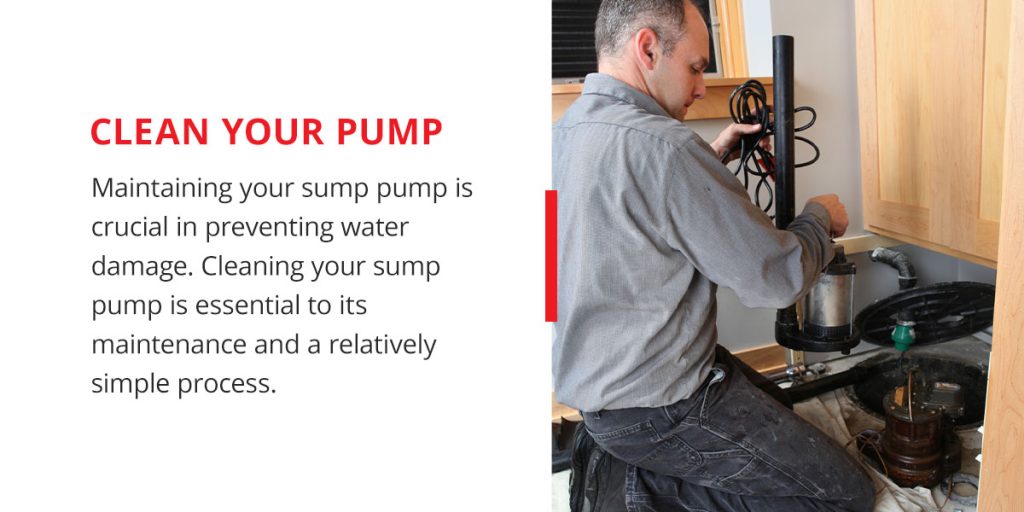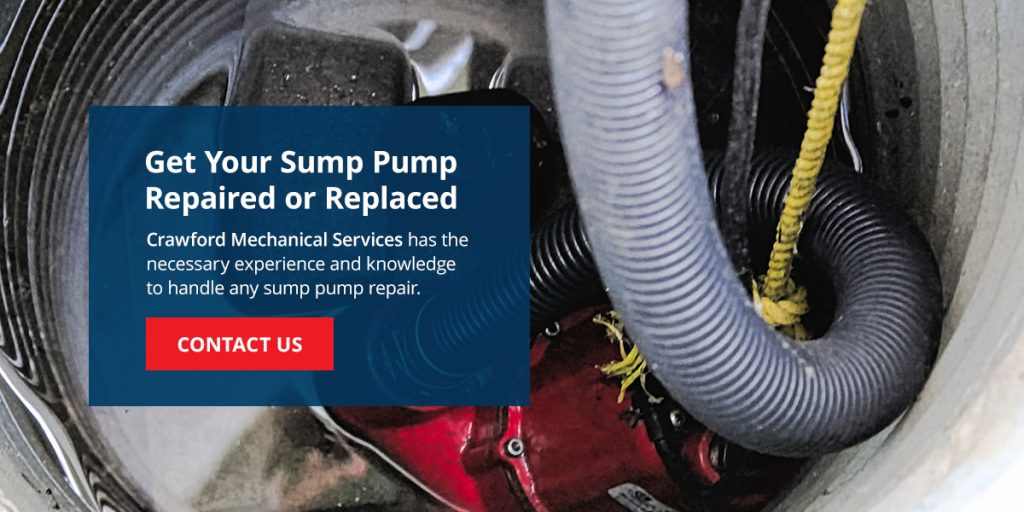A sump pump helps remove unwanted water from your basement or crawl space. It’s usually located in a specially designed pit known as a sump pit. The sump pit is dug in the lowest part of your basement.
Homeowners commonly use sump pumps to prevent water damage caused by flooding, heavy rain or snow melt. The device turns on automatically when water accumulates in the sump pit. After it collects, the pumped water goes to the nearest drainage system or away from your house. The sump pump prevents water from seeping into your basement or crawl space.
Sump pumps differ based on their power source or how they are installed. Some of the different sump pumps you may see include the following:
Each type of pump comes with its own unique features and benefits, depending on your specific needs.
Occasionally your sump pump will have issues that require repairs. Maintaining your sump pump is essential, as a damaged sump pump can lead to a flooded basement. We’ll discuss how to maintain your sump pump and when to call a professional for a sump pump replacement.
Sump pumps can be a lifesaver, providing peace of mind and protection from water damage. Regularly maintaining your sump pump helps ensure it remains in good condition.
Knowing the different parts of a sump pump can help you understand how the device works. Once you know how it works, you can maintain it properly. Here are the critical components of a sump pump:
Regular maintenance can help ensure the sump pump performs when needed.

Maintaining your sump pump is crucial in preventing water damage. Cleaning your sump pump is essential to its maintenance and a relatively simple process. Check your instruction manual before cleaning.
Here’s a step-by-step guide to cleaning your sump pump:
If you notice any issues during the test, you should get the sump pump inspected and repaired by a professional plumber.
Test your sump pump every six months to ensure it functions correctly. Doing so helps ensure it is ready to handle any water intrusion, especially during the colder months.
While maintaining and cleaning your sump pump is a crucial part of preventive maintenance, there are times when you need to contact a professional to fix your pump. Here are some signs to look out for that indicate it’s time to call in a professional:
Sump pumps are designed to operate quietly. If you start hearing unusual noises like grinding, rattling or screeching, it could indicate something is wrong. Check for damaged parts such as the pump’s motor, impeller or bearings.
If you notice an increase in the humidity in your basement, it could be a sign that the sump pump isn’t functioning properly. Check if the water is draining as it should.
If the pump fails to turn on automatically when water fills the sump pit, the float switch is likely malfunctioning. It is best to call a professional to diagnose and fix the issue.
Check if the sump pump is rusty or corroded. If you see any rust, it may have reached the end of its life span, meaning you’ll need a replacement.
If you smell a burning odor or see smoke from the sump pump, immediately unplug it or shut off the power. The burning odor could be a sign of an electrical issue that requires professional attention.
Whenever you notice anything unusual regarding your sump pump, it’s best to contact a professional plumber. A professional can diagnose and fix the problem before it becomes a bigger issue.

Regular maintenance and cleaning are crucial to ensuring your sump pump works correctly. But there are times when repairs require a professional plumber.
Hiring a professional plumber to fix your sump pump ensures the issue is correctly diagnosed and addressed. Crawford Mechanical Services has the necessary experience and knowledge to handle any sump pump repair. We can help whether you need a simple fix or a major pump overhaul.
Calling a professional will save you time and money in the long run and protect your home from water damage. If you need sump pump maintenance in the Columbus, Ohio, area, contact our team of experts!